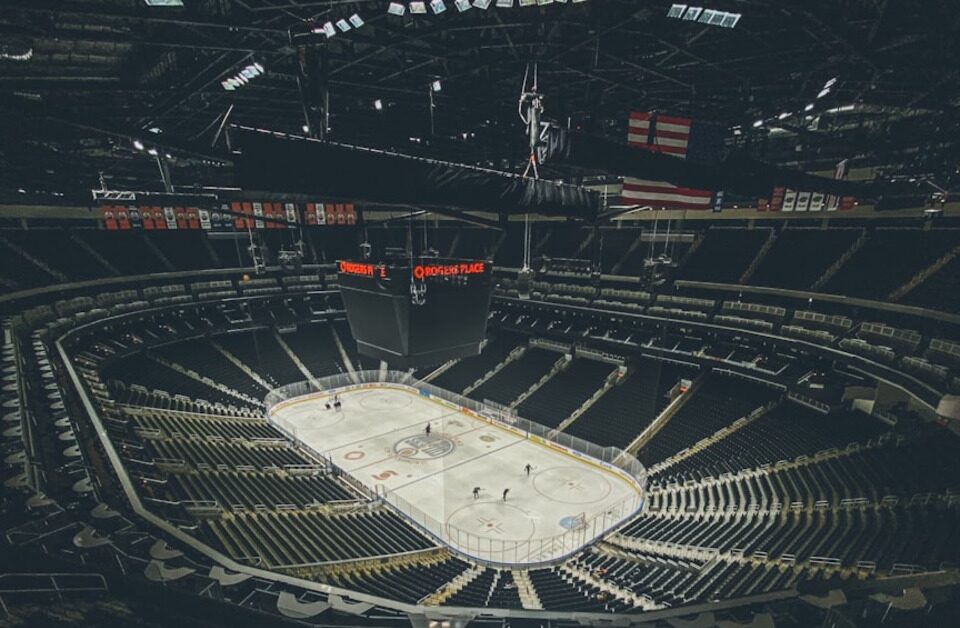Since the National Hockey League (NHL) depends on the enthusiasm and support of its fans, attendance statistics are an important indicator of a team’s viability as a business and market. It’s a good idea to examine the attendance trends that have surfaced as the 2023–24 season approaches the two-month mark. This report provides a glimpse of fan involvement across the league by offering a thorough look at how teams are doing in attracting large crowds.
Methodology of Analysis
Teams were divided into three groups according to how well they could draw crowds to their home games in order to gain an understanding of the dynamics of NHL attendance in the 2023–24 season. A detailed examination of attendance is made possible by the tiered system, which highlights the teams who regularly sell out, those with good attendance rates, and those that still need work. This analysis presents a year-over-year perspective on trends and shifts in fan engagement by comparing current attendance figures to those from the same period last season, using data from reliable sources such as Hockey Reference and HockeyDB.
Tier Analysis: A Closer Look at Team Performances
Tier One: Guaranteed Sellouts
The select set of teams that sell out their home games almost entirely attests to the close relationship these teams have with their fan communities. Not only do teams like the Boston Bruins and Vegas Golden Knights have stellar on-ice records, but their communities also consistently support them. The success of this tier can be partially ascribed to their fans’ enduring loyalty and their players’ constant competitive play, demonstrating how a winning formula on the ice can greatly increase attendance numbers.
Tier Two: Strong Showings
Teams in this group, including the Edmonton Oilers and the Pittsburgh Penguins, have strong attendance records in part because of their successful past and attractive star players. Even though they don’t always play to capacity, these teams are still very much a part of their fan base, which shows how important star power and on-ice success are to attracting spectators. Players such as Connor McDavid remain a major attraction, demonstrating the effect that individual skill has on fan interaction and turnout.
Tier Three: Room for Improvement
Teams like the Calgary Flames and the Anaheim Ducks, who struggle to fill their arenas, are in this category. Notwithstanding these obstacles, there are chances for development and enhancement. When combined with on-ice success, strategies to increase fan involvement may act as catalysts to increase attendance. The ability of clubs in this tier to improve their fan appeal is demonstrated by the experience of teams such as the Carolina Hurricanes, who witnessed a sharp rise in attendance after a change in team performance.
Year-Over-Year Attendance Changes
The research of NHL attendance statistics over the past year shows both positive and negative trends. Excitement about fresh talent and greater team performance has led to a noticeable boost in attendance for teams like the Chicago Blackhawks. On the other hand, a few teams have seen a drop in attendance, which emphasizes the range of variables that can affect it, from team success to prevailing economic situations. This comparison highlights the significance of both on-ice success and successful marketing methods in drawing and keeping fans, and it provides insightful information about the changing landscape of NHL fan engagement.
Conclusion: The Future of NHL Attendance
The 2023–24 NHL attendance data study presents a nuanced picture of fan involvement throughout the league. While some clubs have strong fan bases, others have trouble drawing large crowds to their games. A mix of competitive performance, efficient marketing, and improving the fan experience on game day is the key to long-term attendance development. The NHL’s capacity to adjust and innovate in interacting with its fan base will be critical in determining how many people attend games in the future as the league navigates the post-pandemic environment.
Frequently Asked Questions
1. What was the purpose of the NHL attendance analysis for the 2023-24 season?
The analysis aimed to examine attendance trends across the NHL as an indicator of team viability and fan engagement. By looking at how well teams attract fans to their home games, the study provides insights into the dynamics of fan support and engagement across the league.
2. How was the analysis conducted?
Teams were categorized into three tiers based on their ability to draw crowds to their home games. This tiered approach allowed for a detailed examination of attendance, highlighting teams that regularly sell out, those with good attendance, and those needing improvement. Attendance figures from the current season were compared with those from the same period last season.
3. What are the three tiers of NHL teams based on attendance?
– Tier One: Guaranteed Sellouts includes teams like the Boston Bruins and Vegas Golden Knights, known for their strong fan support and consistent sellouts.
– Tier Two: Strong Showings consists of teams with strong attendance records, such as the Edmonton Oilers and Pittsburgh Penguins, thanks to successful pasts and star players.
– Tier Three: Room for Improvement includes teams struggling to fill their arenas, like the Calgary Flames and Anaheim Ducks.
4. What factors contribute to a team’s tier classification?
A combination of on-ice success, star power, fan loyalty, and effective marketing strategies are key factors. The analysis shows that winning performances and popular players significantly impact fan turnout.
5. Were there any significant changes in NHL attendance over the past year?
Yes, the analysis revealed both positive and negative trends in NHL attendance. Some teams, like the Chicago Blackhawks, experienced a noticeable boost in attendance due to excitement around new talent and improved performance. Conversely, other teams saw declines, underscoring the influence of various factors like team success and economic conditions.
6. What does the future hold for NHL attendance?
The study suggests that the key to long-term attendance growth lies in a mix of competitive performance, effective marketing, and enhancing the fan experience on game days. As the league navigates the post-pandemic environment, its ability to innovate in engaging with fans will be crucial for future attendance.


